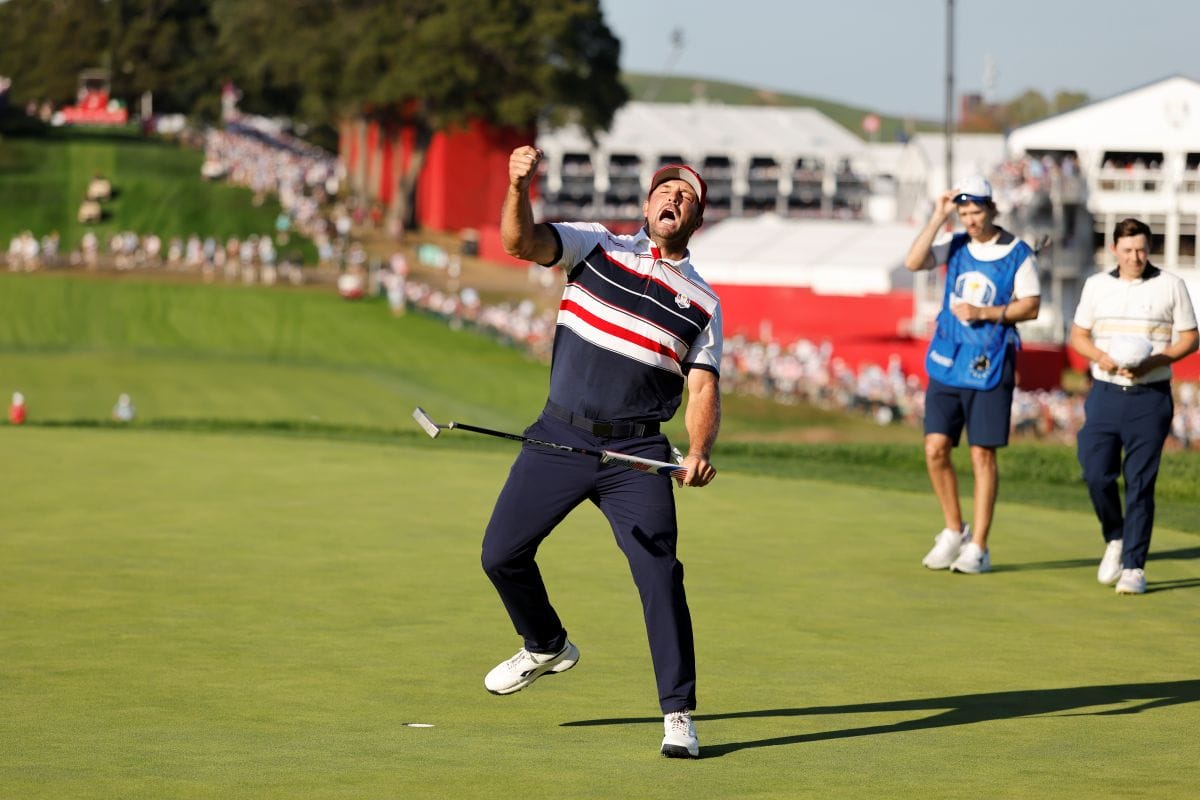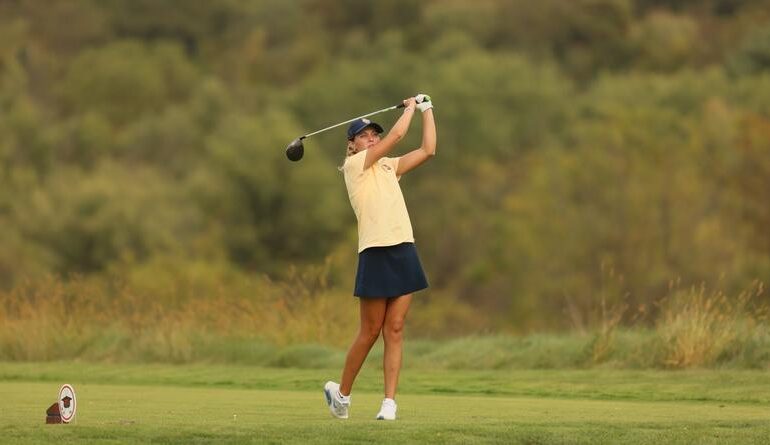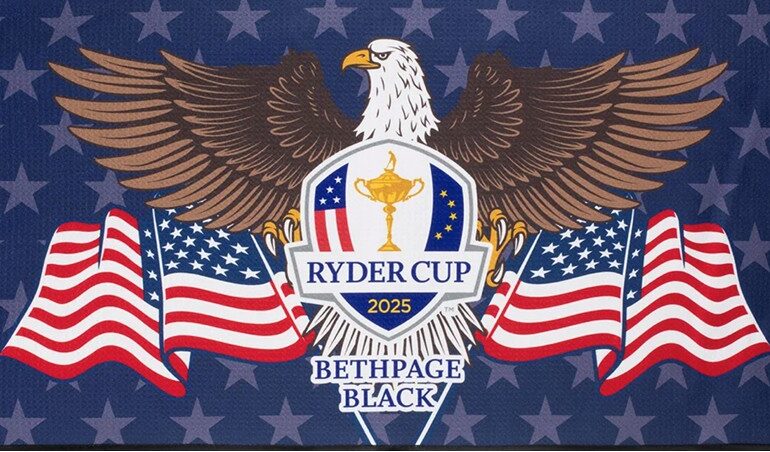It’s safe to assume that there were a few hangovers within the European camp yesterday morning, but those headaches will pale in comparison to those felt within the United States’ camp.
For the third time in six attempts, they welcomed the Europeans to their home patch and watched on as they lifted the Ryder Cup trophy, doused themselves in champagne, and celebrated with wild abandon.
And that’s got to hurt.
Bad enough watching it happen in Scotland, in Paris, and in Rome, but watching it happen in Michigan, in Illinois, and in New York? That’s a whole new level of pain.
The rhetoric that the Americans don’t care enough is always trotted out in the aftermath of a European Ryder Cup win, but it’s lazy. They cared, and they cared a lot. We’ve seen Cameron Young play a lot of golf at this stage. We’ve seen him suffer final round heartbreak and we’ve even seen him win, but we haven’t seen him show anything close to the emotion that poured out when he holed the match-winning putt against Justin Rose.
Justin Thomas, Bryson DeChambeau, even Scottie Scheffler, their actions and emotions tell the story. They care a lot.
You don’t get to the top tier of professional golf without being a fierce competitor on top of an abundance of talent and a strong work ethic. And when you’re a talented, hard-working, fierce competitor, getting beaten stings.
And let’s not forget how close the Americans actually came to completing the greatest comeback in Ryder Cup history. If Russell Henley’s putt on 18 carries a fraction more weight, and if Sam Burns – hailed as the best putter on the PGA Tour – doesn’t three-putt the last, you’re looking at 14-14.
What’s the narrative then? That the Europeans cared less on Sunday?
Keegan Bradley and his vice-captaincy squad will take time to reflect on what went wrong on Friday and Saturday, and I can assure you, the lack of care won’t be brought up.
There is a tendency to laud a winning captain as a hero and his losing counterpart a buffoon, but again, had the Henley and Burns matches gone the way they probably should’ve, given where they found themselves on the last hole, would that suddenly make Luke Donald a figure for ridicule?
Following on from a question directed to Jon Rahm about what made Donald such a good captain, the captain himself touched on some of the finer details, going so far as to change the hotel shampoos for ones that smelled better. This was all in aid of making the players as comfortable as possible, and putting them in a position to perform at their highest.
I’ve seen this projected as being some sort of master tactic that shows just how much better than Bradley Donald actually was. Give me a break!
If Bradley suggested that the American players were unhappy with the scent of their shampoos, we’d all be blasting them for being pampered prima donnas, more concerned with their appearance and smelling good than with winning the damned trophy.
No, the difference in captaincy and leadership can be much more easily traced to the fact that Donald had been there and done it before. He’d played in four Ryder Cups to Bradley’s two, and had been a vice captain in two more before stepping into the hotseat. Bradley hadn’t been in a Ryder Cup setup since 2014.
In Donald’s vice-captains, he had Thomas Bjorn and José María Olazábal, both of whom served as winning captains before and had been involved in 18 Ryder Cups combined as players, captains and vice-captains. Additionally, Francesco and Edoardo Molinari and Alex Noren, who completed his lineup, also had eight previous Ryder Cups in various forms between them.
Contrast that to Bradley’s support network where Jim Furyk (14 total) was the only man with extensive experience and Kevin Kisner and Gary Woodland had never been involved in a Ryder Cup in any form.
In selecting Bradley in the first place, the PGA of America were tearing up the script. It didn’t help that they’d Tiger Woods earmarked to lead the team and Woods’ late withdrawal left them scrambling.
Bradley’s passion for the Ryder Cup, best witnessed when Netflix’ cameras were recording him as he found out that he wasn’t going to be on the 2023 team despite most agreeing that he’d played well enough to be on it, was precisely what led the PGA of America to offer him the job.
Was he qualified? Had he served his apprenticeship? Was he going to be singularly focused on winning the Ryder Cup in New York? No, he was still very much an active player, trying to win golf tournaments, perform at the highest level, and he did a pretty good job of it. That’s not in any way a slight on Bradley, it’s simple human nature.
By his own admission, he got the golf course setup all wrong. By making a notoriously difficult golf course play as easy as it could possibly play, you were taking many of the variables out of play and reducing it to a putting contest, and putting is the least reliable metric. It’s rare that a player – or a set of players – vastly out perform their standard skillset from tee-to-green – they have good weeks and bad weeks – but on any given week, even the worst-ranked putter on tour can hole everything they look at.
Bradley also made glaring mistakes in his pairings, particularly in foursomes. That the Collin Morikawa/Harris English partnership was the worst statistical fit of the 132 possible pairings was well highlighted, so it had to be a gut feeling more than anything else that created it. Gut instincts have often proven to be right, but when it was so clearly proven wrong on day one, doubling down and sending them back out on day two was a jarring error.
He’s been criticised for not playing Cameron Young in all five matches given the way Young played, but that’s an unfair jab. Few expected Young to play in foursomes in the first place, but when he performed the way he did, he was promoted into the morning session. Not playing J.J. Spaun more, however, is worthy of rebuke.
Spaun’s skillset and season-long consistency made him ideal for the format, as has the ability he’s shown to perform under severe pressure, but he only played in the fourball sessions. In my mind, that’s a much more severe error.
Pairing Scottie Scheffler and Bryson DeChambeau in fourball was another. These were Bradley’s two marquee men, the players he had to lean on, and when he needed to deliver as many points as he could, he couldn’t risk playing them together. That they actually lost to Justin Rose and Tommy Fleetwood only compounded the error.
The PGA of America have to take their share of the blame, as well. They did nothing of any consequence to try to control the crowd, apart from firing the emcee who led the “F**k you, Rory!” chant on the first tee – and did so without apologising themselves.
The abuse directed at the Europeans galvanised them, and must have had a negative effect on the Americans. It can’t have been comfortable for any of the players to witness what their opponents were being subjected to. To intervene in any significant way apart from holding up hands calling for silence risked having the baying mob turn on them, so instead, they shifted uncomfortably.
By the final day, the galleries were closer (but not still remotely close) to 50-50 as many Americans sold their tickets at cut rate prices and Europeans lapped them up. There was still plenty of heckling, but it was noticeably less than on the previous days and it was here that the U.S. players suddenly started performing at the levels that they expected.
Coincidence? Maybe, but maybe not.
At the end of week, it was a black eye for American golf. Their players got beaten, and their fans – a limited portion, admittedly, but enough to tar many of those around who stood idly by – disgraced themselves.
But it wasn’t because of a lack of caring on the players’ behalf.







